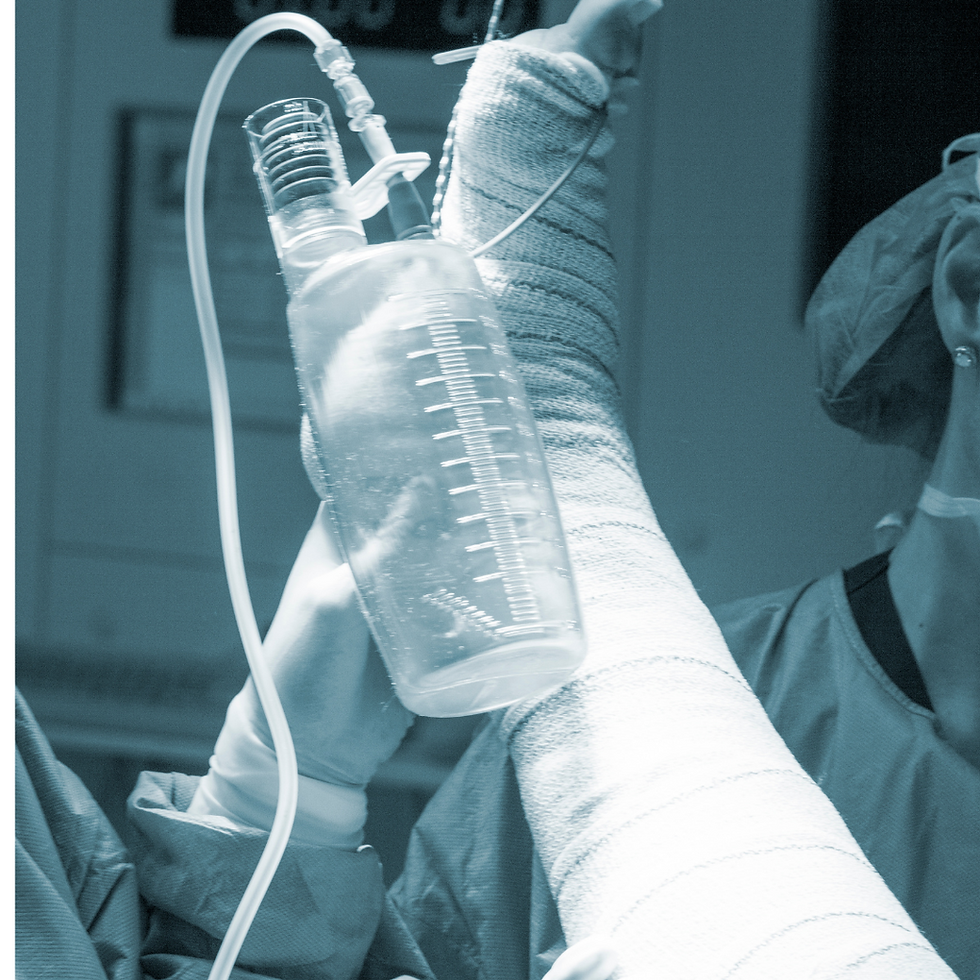Arthroscopic Knee Surgery- Post-op
- drchiragthonse
- Dec 10, 2020
- 4 min read
Updated: Dec 11, 2020
Taking care of yourself after surgery can speed your recovery, prevent complications, and help you feel better as you heal. This handout explains how to care for yourself when you get home. If your healthcare providers tell you something different, follow what they say.

What is arthroscopic knee surgery?
Arthroscopic knee surgery is surgery to diagnose and repair problems with your knee. The surgeon inserts an arthroscope (a tube with a tiny camera) into your knee to get a close look at the issues. The surgeon can then make small incisions (cuts) and insert tools to repair or remove damaged tissue. With arthroscopic surgery, the incisions are small, and your recovery is relatively fast.
How do I care for myself at home?
Pain and swelling
• Take pain medication as prescribed by your doctor. When you bring your pain under control, your body can focus more on healing. Take your pain medication exactly as directed. Don’t wait for the pain to get too bad.
• Don’t take any pain medication that your doctor has not recommended and don’t drink alcohol while taking pain medication.
• Elevate your leg. For the first two days, keep your leg elevated above your heart. Lie flat and use 2 or 3 pillows to prop up your knee.
• Use ice as directed by your doctor to relieve pain and to swell for 2 to 3 day.
Incision care and compression stockings
• Keep your dressings clean and dry. You can remove your dressings (bandages) after. You can take a bath or shower without worrying about getting your incisions wet subsequently.
• Wear your compression stockings (T.E.D. hose). Compression stockings help prevent blood clots. Wear them until then.
• Watch for bleeding. You may have a small amount of bleeding from your surgical incisions, which is normal.
• Watch for signs of infection at the incision site and report them to your doctor. Symptoms include increased redness or swelling, pus, or fever over 101°F.
Nausea and constipation
• Some pain medication can cause constipation. Take over-the-counter stool softeners or laxatives if needed. Drink at least eight glasses of water each day.
• Some patients have some nausea from the general anaesthesia. If so, start by drinking clear liquids and slowly add solid foods when you’re ready.
Do range-of-motion exercises as prescribed.
These will help you regain strength, balance, and range of motion in your legs and knees — and prevent blood clots. Unless told otherwise, start these exercises on the day of surgery, and do them as often as every hour you’re awake. Your workouts may include:
Quad sets. Tighten the muscles on the top of your thigh, while at the same time pushing the back of your knee down into the chair or bed. Hold for 5 seconds, then relax for 5 seconds.
Ankle pumps. Slowly move the front of your foot up and down, as if you are pumping the brake on a car.
Straight leg raises. Keep your affected portion flat and straight. Bend the other leg, with the foot flat on the floor. Slowly raise the affected leg — keeping it as straight as you can — until it’s about 6 inches off the floor. Hold for a count of 5 seconds.
Avoid activities that cause pain or swelling to the knee.
Examples include climbing stairs or standing or sitting for long periods.
Return to work when your doctor recommends.
Many patients can return to office work within a week. If your job is physically strenuous and a light-duty assignment is not available, you may need to be off work longer. You may return to work after.
Begin other activities as advised by your doctor.
In most cases, you can start other activities a week after surgery, but talk with your doctor before you drive or do any sport or strenuous work. Don’t do activities like biking, hiking, or lifting weights until you can bend your knee freely to 90 degrees.
Recovery and follow-up
The recovery period and what you can expect long-term depends on the type of knee problem you had, your general physical condition, and other factors.
Follow-up appointment.
Your doctor will schedule an appointment to check your progress, set up a treatment program, and answer your questions. Write down your questions and bring the list with you to make sure you cover everything important to you.
Physical therapy.
Your doctor may recommend physical therapy. A physical therapist can create and supervise a program of specific exercises to increase your flexibility, strength, and balance. Physical therapy also includes a variety of treatments to reduce scar tissue, promote healing, and help prevent future injuries.
When should I call my doctor?
Watch for problems, and call your doctor if you experience any of the following:
• Your knee keeps bleeding (small spots might show on the bandages, but they shouldn’t spread).
• You have pain that you cannot control.
• Pus or foul-smelling liquid drains from your knee.
• You have chills or a fever over 101°F.
• You have nausea and vomiting that does not stop.
• Your knee continues to swell or feel numb, and elevating your leg or loosening your bandage doesn’t help.
• Symptoms of a blood clot in a deep vein (DVT), including chest pain or shortness of breath. If these are severe, seek emergency care.

Comments